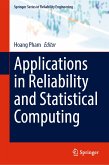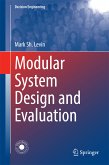This book is a compendium of research articles on various issues concerning product research, written by research scholars both from academia and industry.
The papers have been divided into four main parts. The first part is on innovation and information sharing in product design. The second part deals with decision making in engineering design. The third part treats customer driven product definition, and the last part brings together articles on quantitative methods for product planning.
Dieser Download kann aus rechtlichen Gründen nur mit Rechnungsadresse in A, B, BG, CY, CZ, D, DK, EW, E, FIN, F, GR, HR, H, IRL, I, LT, L, LR, M, NL, PL, P, R, S, SLO, SK ausgeliefert werden.









